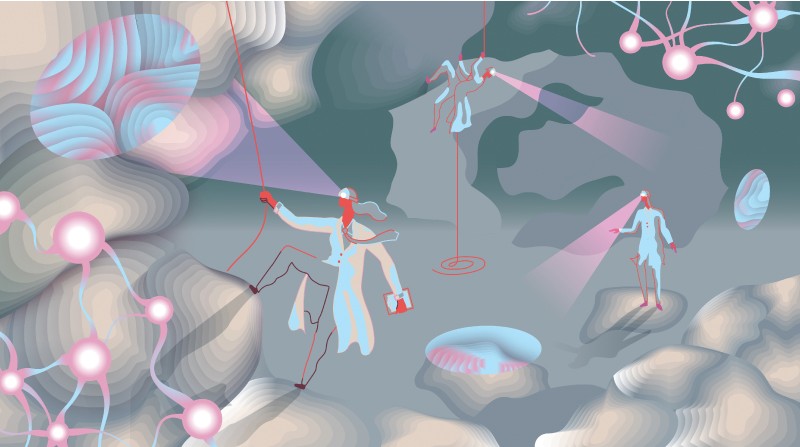Table of Contents
We are living in a world where science and technology are advancing rapidly. Everything in the world has a definition in terms of its scientific aspects. Science is always based on experimentation which arises from the question ‘How’? Thus the cause of something is a vital factor when elucidating an aspect scientifically.
Specificity in Medical Science
Medical science is entirely based on cause and effect. Any disease in a human manifests in the form of symptoms, which is referred to as the clinical presentation. These clinical presentations may be due to underlying mechanisms which in turn are due to the disease’s mechanism or, in one word, the pathophysiology. The drugs needed to treat the disease and the pathophysiology hold an opposite relationship, i.e. the drugs are chosen by checking whether their mechanism of action counters the pathophysiology, thereby controlling the symptoms and eradicating the disease. In short, the medical system is based on a specific diagnosis. This involves understanding the specific cause and countering it with a drug with a specific action.
Specificity: a problem for psychiatry?
Specificity poses a problem concerning psychiatric disorders because it is difficult to extract the specific cause of abnormal behavior. The disease’s pathology is unknown and the psychiatrists were forced to discern the cause from the symptoms and design the treatment plan accordingly. Eminent psychiatrists like Pliny Earle disproved the need for a specific classification system and stated in 1886 that they should rely on the older system. This system classified diseases into mania, monomania, dementia and idiocy.
Specificity is crucial to distinguish between diseases to result in a proper diagnosis. This is since the diagnosis of psychiatric illnesses in the beginning is based on symptoms. Therefore psychiatry is structured to involve a legitimate classification system with loopholes.
Origin of the DSM-I and DSM-II
Speculations about the specificity were ongoing even when psychiatrists were summoned to treat the army in World War II. After many unfruitful discussions on the same topic, in 1948, the American Psychiatric Association considered creating a new system. Consequently, the Diagnostic and Statistical Manual was published in 1952. Known as the DSM-I, it divided mental health disorders into two groups. Firstly, there are cases in which disparities occur due to disturbances in the brain’s functions and secondly, there are psychotic disorders. The former arises from the incompatibility of the patient with their life situation.
The DSM-II was introduced with further modifications after 16 years.
• Disadvantages
The classifications rely solely on the patient’s symptoms and psychodynamics rather than a defined criterion when it comes to confirming the diagnosis. These have turned out to be clinically irrelevant and unreliable. With these unclear criteria, a problem arose in the 1970s that psychiatric disorders couldn’t be considered under insurance coverage.
Arrival of DSM-III
Feighner’s criteria were marked as the first revolutionary criteria in the field of psychology. This criterion offered about 14 classifications for different mental disorders: primary and secondary affective disorders, schizophrenia, anxiety neurosis, hysteria, obsessive-compulsive, phobic, antisocial personality disorder and eight more.
In par, Robert Spitzer was given the responsibility of revising the DSM-II and building specific criteria, leading to the DSM-III. It fixed the diseases into categories and defined them well, separating pathology from the usual causes. They set the number of required conditions at 265, making the process more accurate. Melvin Sabshin described it as “the triumph of science over ideology.”
• Disadvantages
They didn’t care much about connecting the development of symptoms to a psychiatric condition.
The last page of the ‘troubled’ history: the DSM 5
Even though the DSM-III underwent two revisions, it did not have a further impact. The researchers thought that the DSM had a broken axle and had no relevance in the field. Thus the DSM-5 task force was formed who, upon on further investigation, concluded that it was time to stop considering specificity as the primary concern.
The DSM-5 aimed to screen the patients using 23 questions to allow them to self- answer regarding their symptoms. The scores are used for diagnosis. After that, the conclusion will be elucidated from an interactive interview.
Later, field trials were conducted with about 1000 doctors and twice the number of patients. Unfortunately, the results were not good, marking the failure of the DSM 5. In the APA meeting, the DSM 5 was planned as the psychiatrists involved thought that it may deviate from traditional practices and burden doctors as a result. The insurance companies would also have a loophole, where they could refuse to reimburse patients with low scores.
In 2013, Thomas Insel, the director of NIMH, rejected the DSM by referencing its weaknesses.
Final Words
It is a matter of fact that no matter how much science relies on pathology/cause, disparities can occur. In this light, psychiatry stands firm with a good success rate in the present scenario. Modern society needs psychiatry for the improvement of its well-being.








